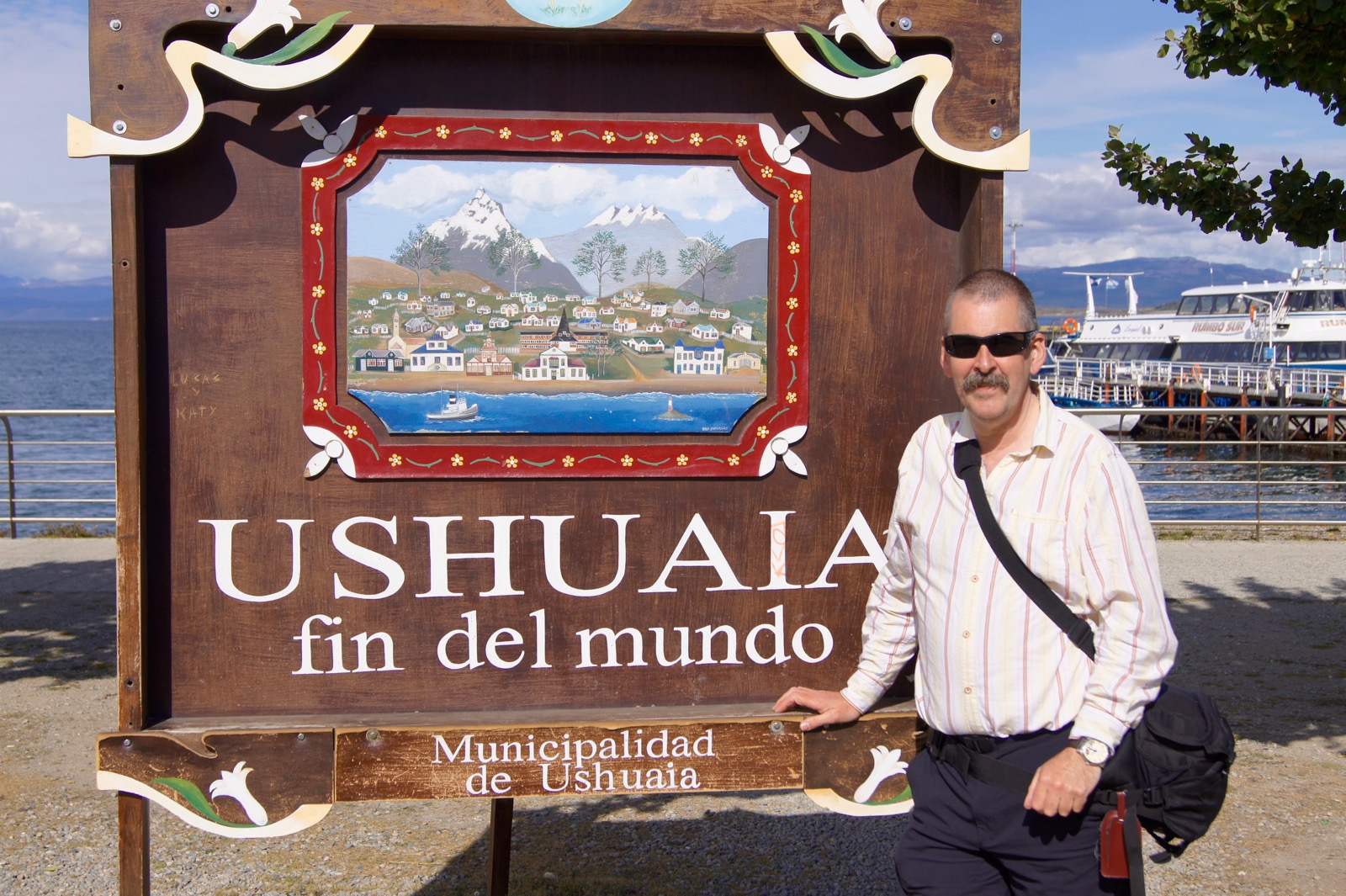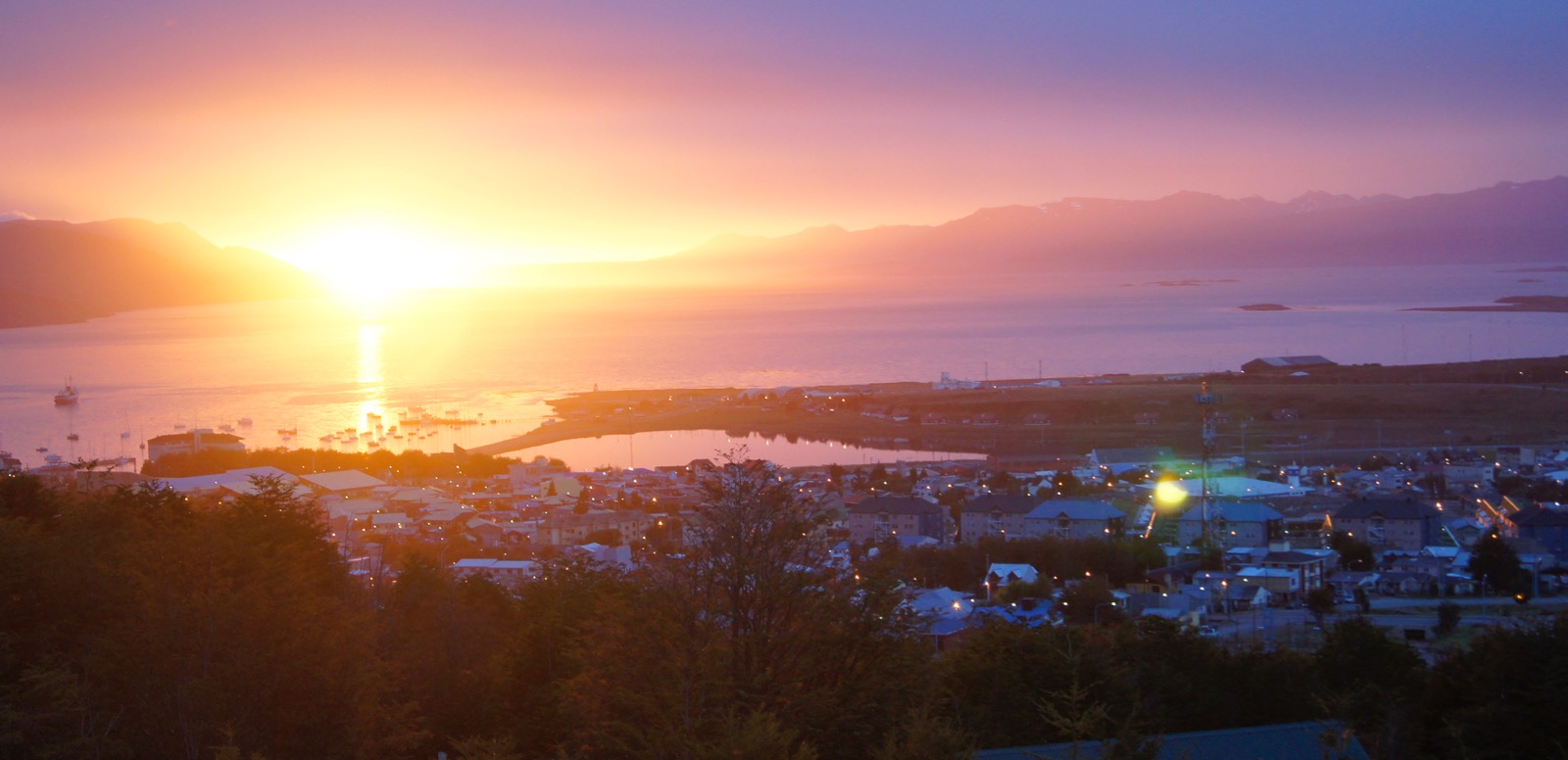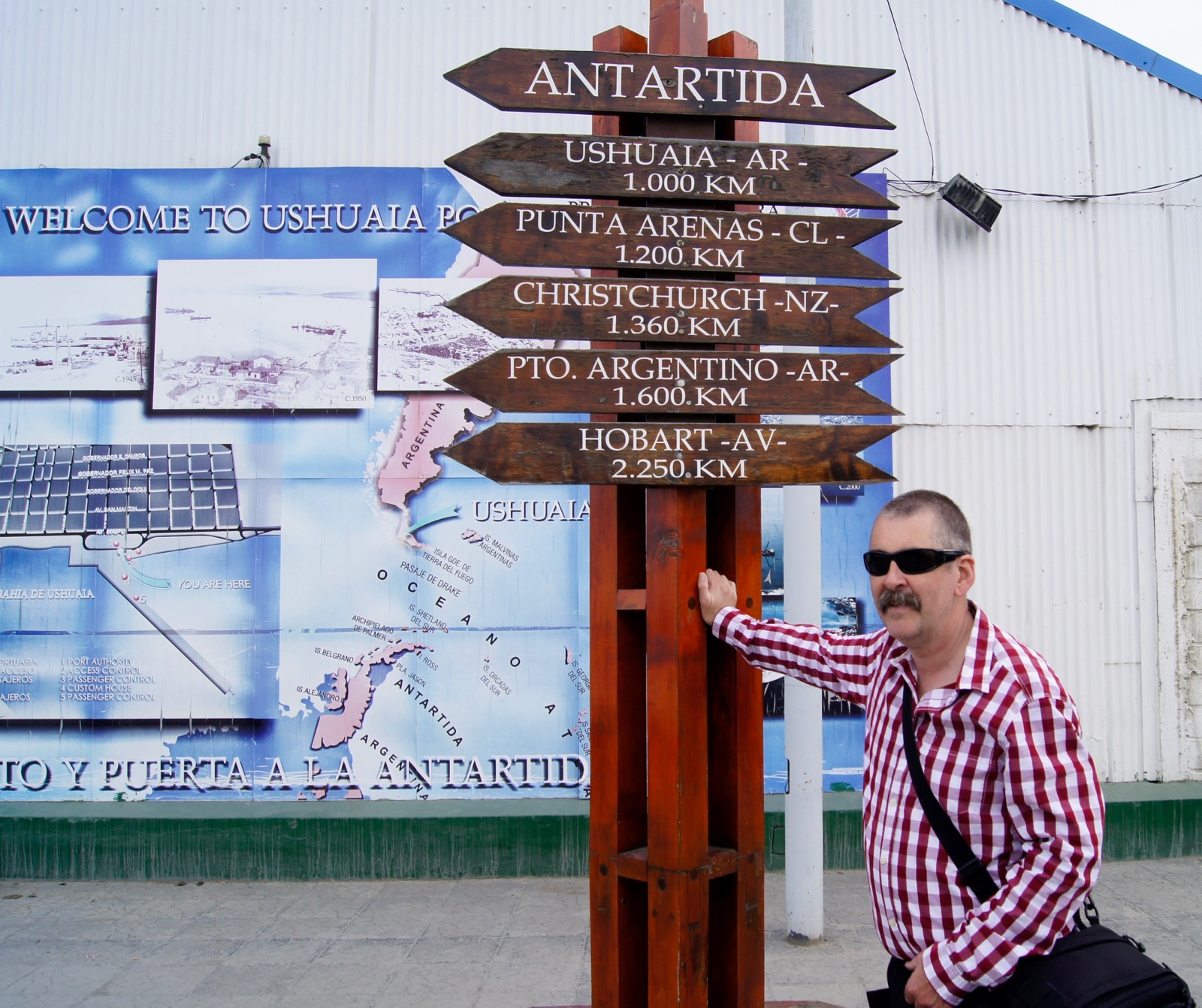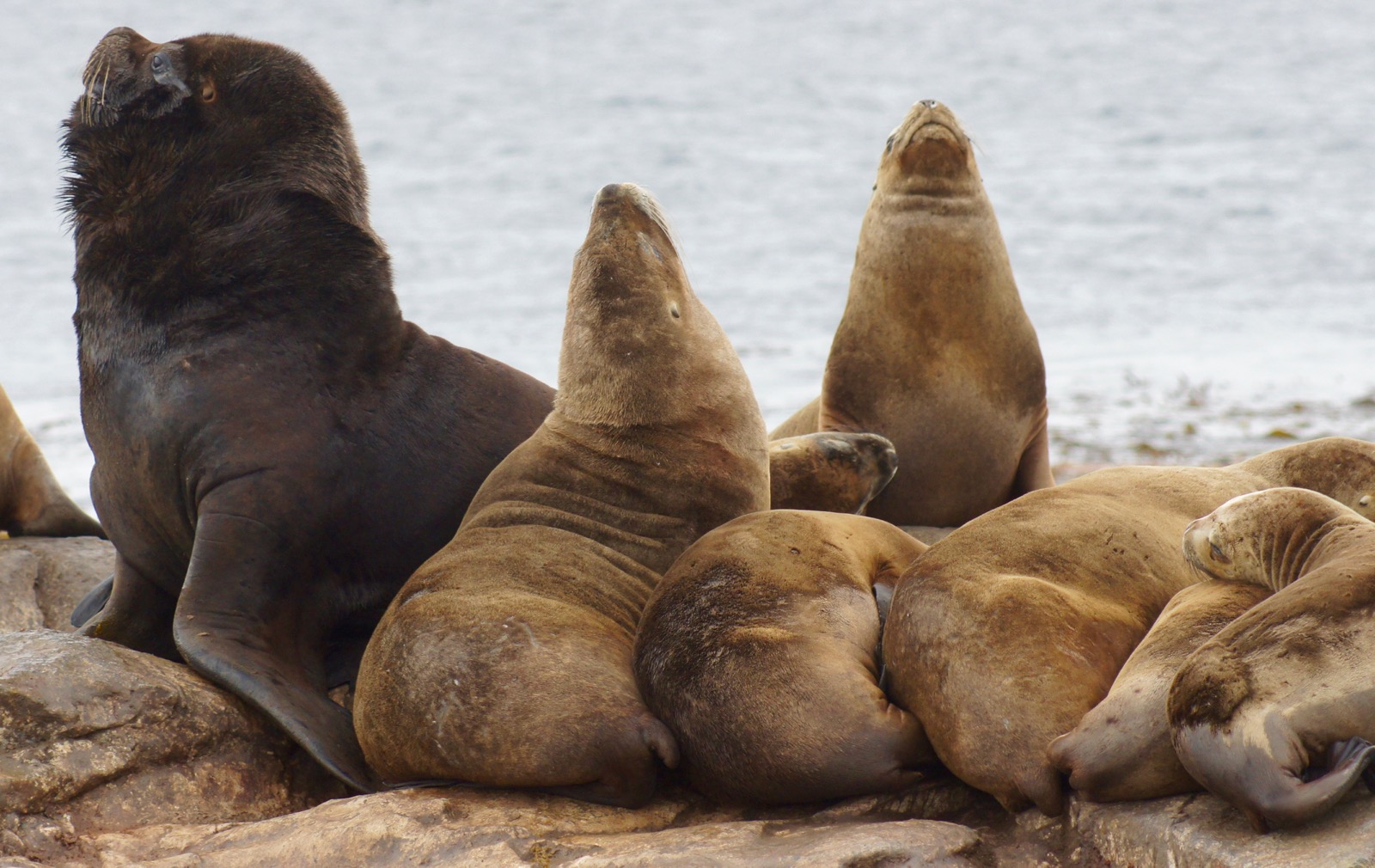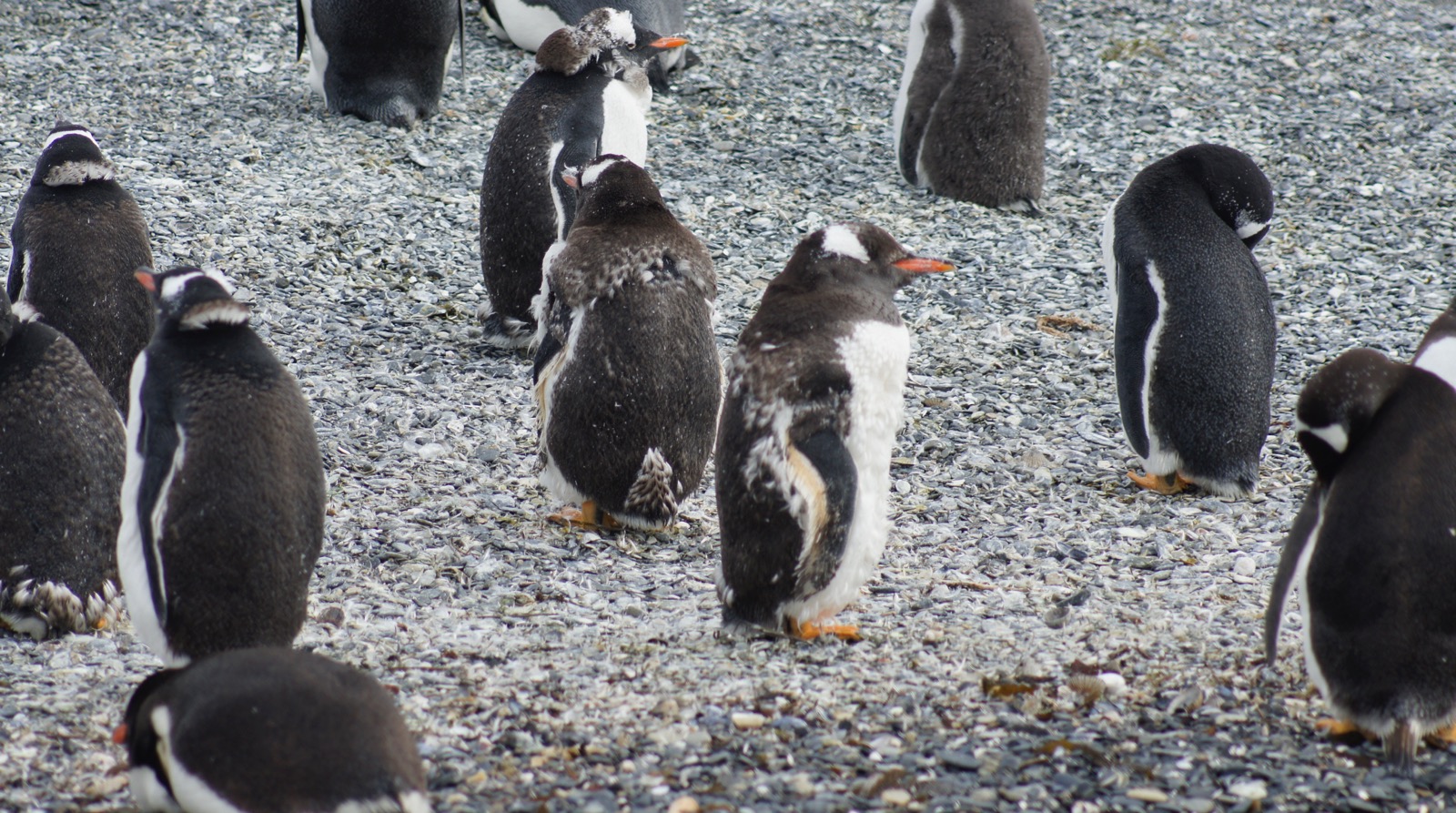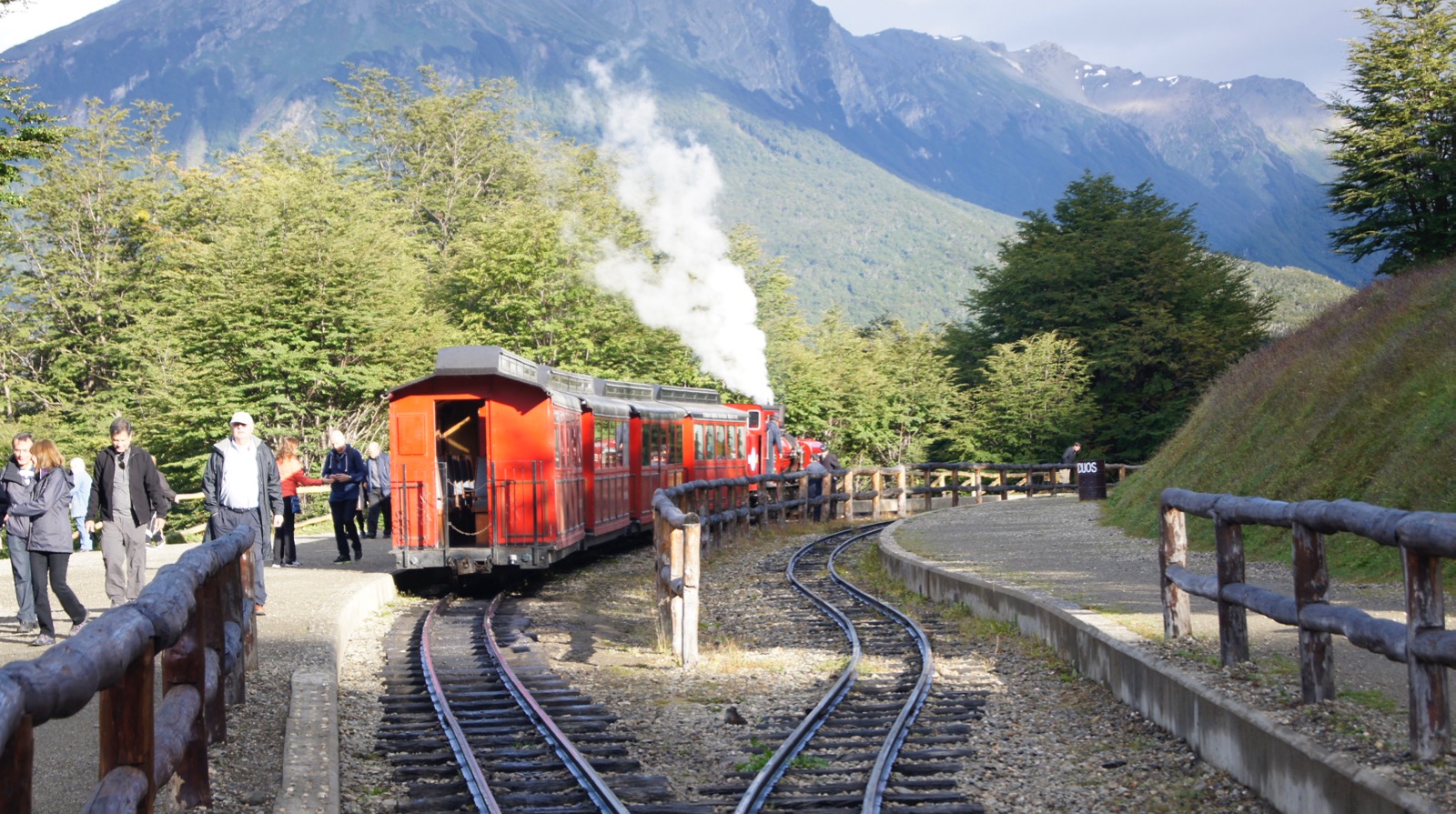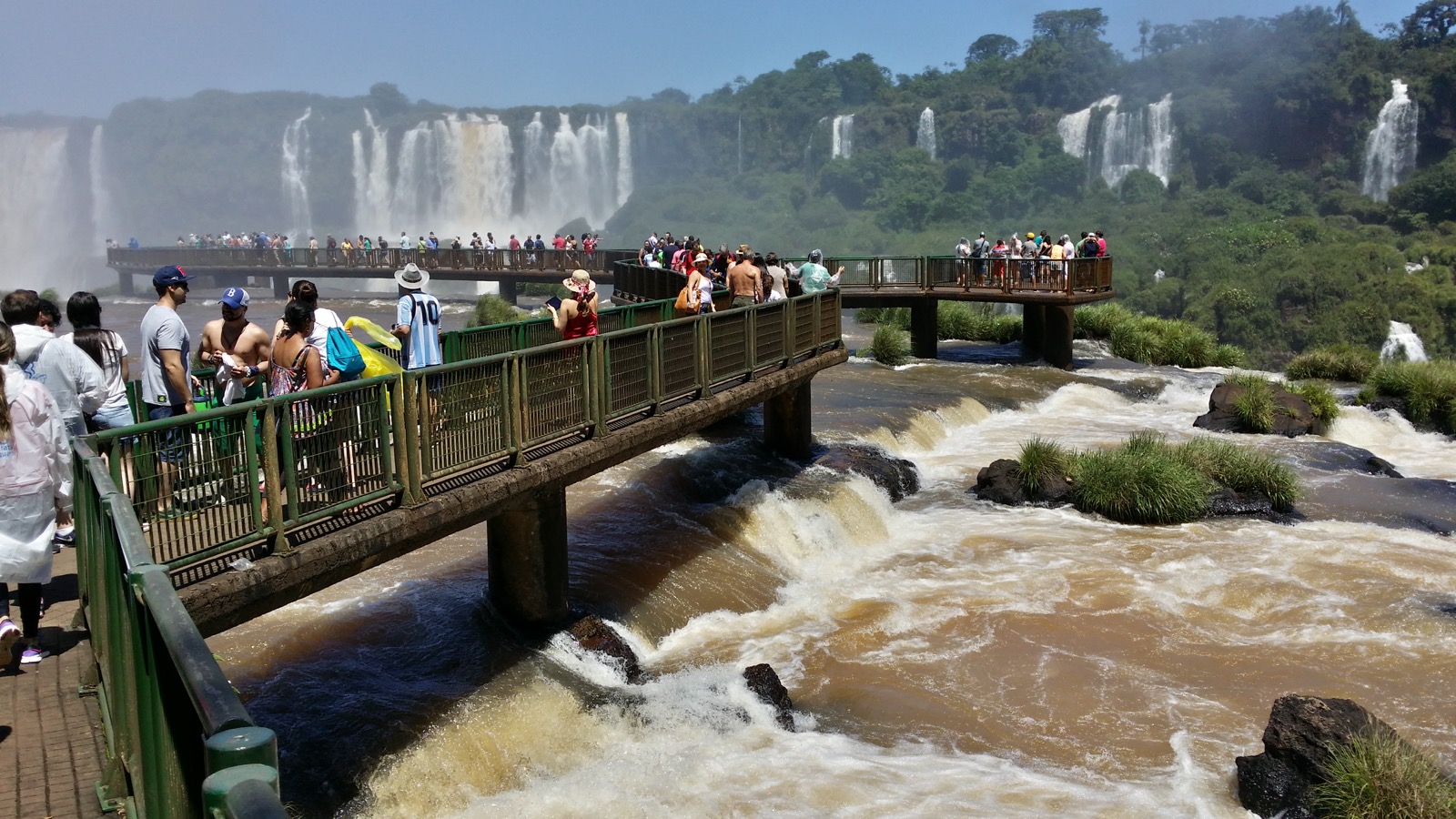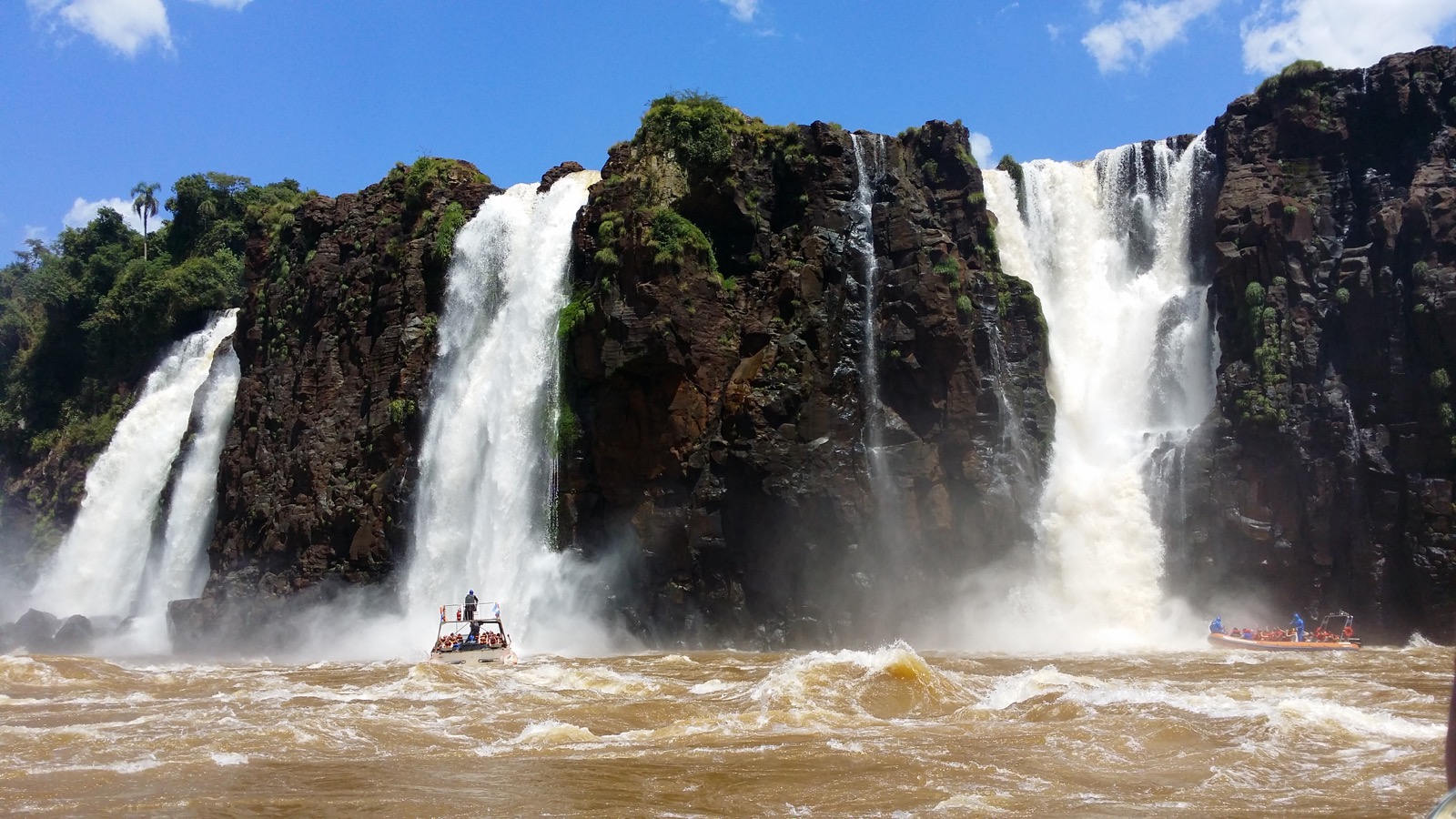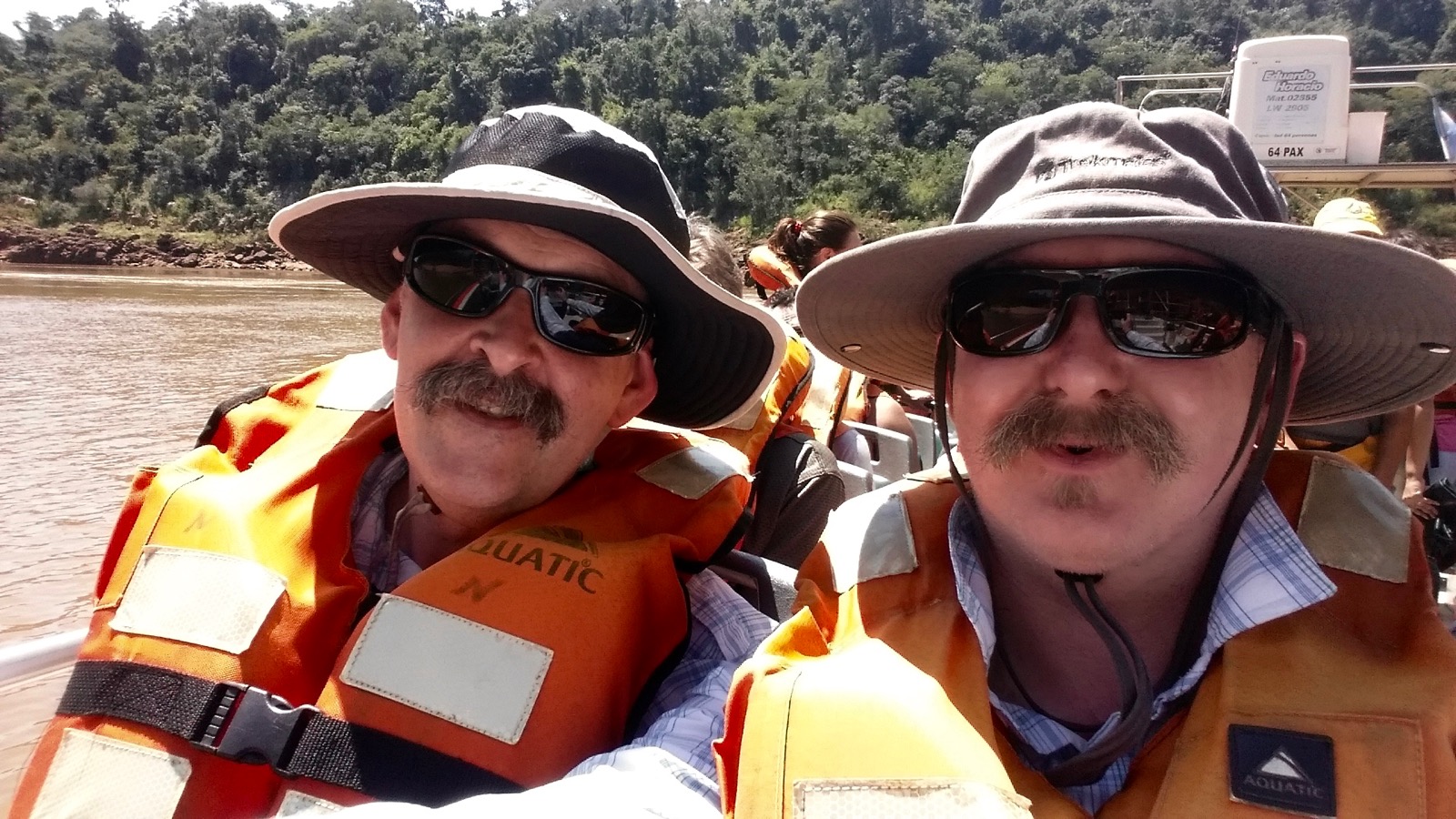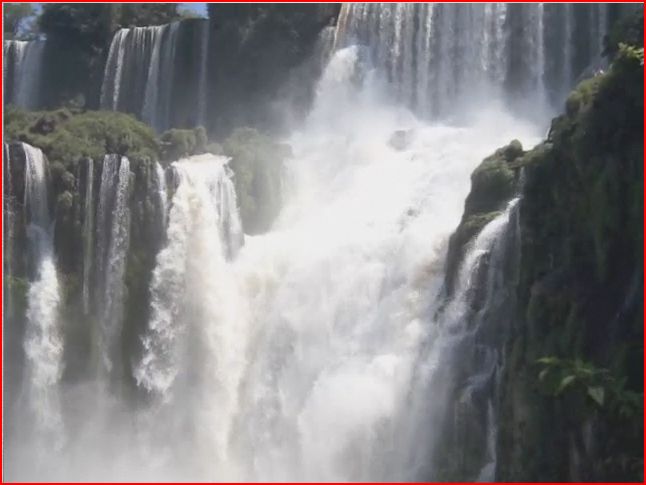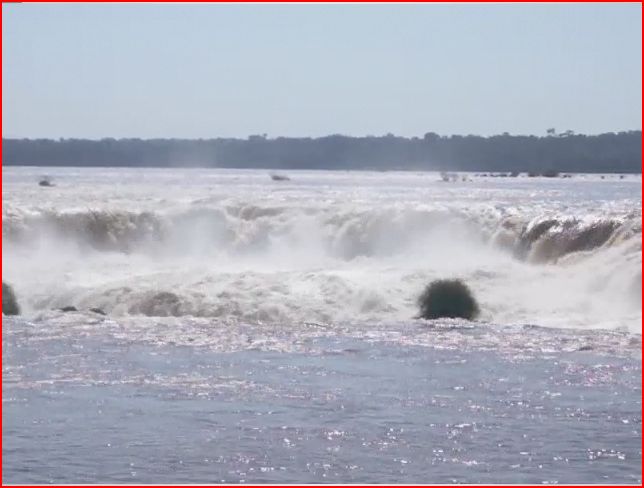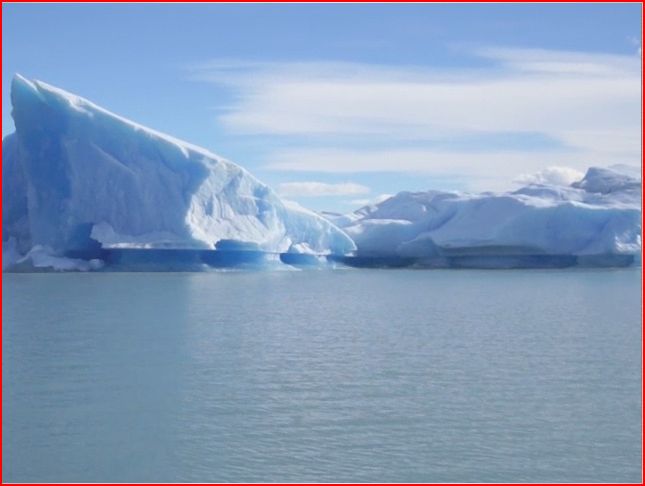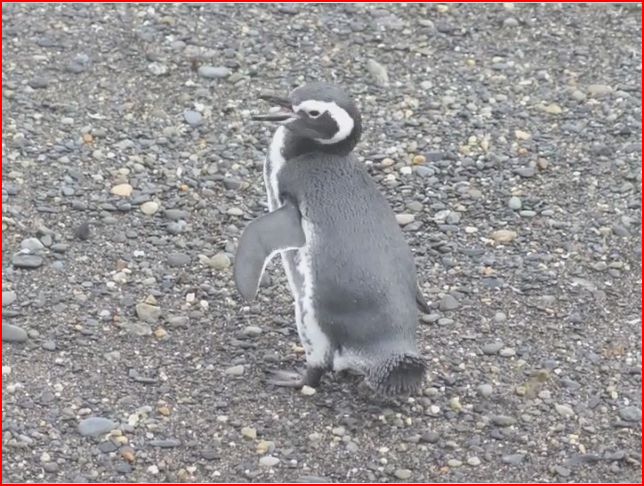Argentina

Perito Moreno Glacier
The visit today was to the Perito Moreno glacier (which is one of the 47 major glaciers in the Parque Nacional Los Glaciares) and was about an 80 km drive from the hotel. At the start of the journey we saw Lake Argentina and passed through a vast flat expanse of grassland in a valley formed by the glaciers about 10000 years ago. Today was sunny but very windy; the wind blows across from Chile and there is a local saying that when it is very windy the Chillians have left the windows open. Rainfall is very low and the landscape appears almost like a treeless desert. However as we got closer to the glacier stunted trees began to appear, eventually becoming a wooded area, with the leaves beginning to gain their autumn colours. We also had good views of Mount Fitz Roy.
Read More…
The glacier is immense, covering an area greater than the city of Buenos Aires. We spent an hour in a boat seeing it and the ice-bergs derived from it up close and were then able to explore a series of walkways which gave us superb views of the 60 metre high North and South front wall of the glacier. We could also hear the sounds of the ice cracking, and occasionally a loud crash as blocks of ice tumbled from the face of the glacier into the water. After seeing all this ice in the day, what could we do tonight after we returned to El Calafate, but have an ice cream (dipped in chocolate)!
Upsala glacier and the Estancia Christina
An early breakfast this morning for our trip to the Upsala glacier and the Estancia Christina. A spectacular sunrise over the lake and the red sky reflected in the snow of the mountains. The mountains here are lower in height, about 6000 feet. After a short bus ride we transferred to a catamaran for a 3 hour cruise on the lake. Today was another sunny, clear day, but cooled by the wind. Firstly we sailed towards the glacier amongst the floating icebergs, some of which were much taller than the boat. At one point we watched a large block of ice fall from the iceberg. If you look closely at the photos you can make out the features of a human face on the side of one of the mountains. From here we continued the cruise to visit the estancia which originally belonged to an English family the last descendant of which died in 1997 (Janet McDonald de Master).
After a picnic lunch we were shown round the estancia. While in a small museum (in what was once the sheep shearing shed) we heard the history of the Master family. Master was a sailor who in the early 1900’s came to Patagonia as a farm manager. He and his wife had two children, a boy and a girl. Eventually the father acquired enough sheep for a farm of their own. He read an account of an isolated valley accessible only by boat – perfect for a firmer sailor and moved his family here. His son went off to an English school in Buenos Aires. The daughter, Christina stayed at home and helped her father manage the estancia. At the age of 20 Christina died and the ranch was named after her. The son only returned to help his parents in the 1960’s. In 1937 the whole area the estancia was in became a National Park and the family discovered that although they had lived there over 20 years they did not own their property. Eventually an agreement was made that they could continue to farm there until the last family member died out.
At some point the mother was told she was sick and likely to die soon. A Scottish widow woman (Janet) came to help the family. The mother however lived on and eventually died in her 90’s. The father died a few years later aged 99. The son, conscious that the farm would pass back to the park when he died, married Janet (when he was in his 80′) so she would be able to continue to live at the estancia. After he died she could no longer farm it herself, but ran the property as a bed and breakfast for mountaineers, until she died.
After this we had a 40 minute 4×4 ride up a steep dusty and bendy rough track for a view of the top of the Upsala glacier and two other glaciers feeding into it. Although we were high up, the ground had originally formed the bed of a sea and there were lots of fossilised marine creatures there. At some time the whole area had been under ice and some of the rocks had been polished smooth as the glaciers had moved over them during the ice age. We returned to the catamaran by the same way for another 2 hour boat ride. Will be late back but its been a hot and sunny day – even the wind has been warm. The carnival starts tonight so we hope to have singing and dancing in the street. Some of the people with us will make it to Rio for the last day of the carnival but we will miss it. Tomorrow we will be heading off to the end of the world!
Ushuaia
It was another early start this morning to get to the airport for our flight to Ushuaia, as far South as we will go in Tierra del Fuego. There was thick dense cloud for most of the flight but suddenly we saw stunning views of the mountains(the Cerro Martial and Monte Olivia and the Beagle Channel (which connects the Atlantic and Pacific Oceans) as we descended to land at the airport which lies on a peninsula stretching out into the channel . The temperature was about 12 degrees when we landed. In the afternoon we took a 40 minute walk up the hillside to take a chairlift up towards the Glacier Martial which overlooks the town. There were trails towards the glacier, but we didn’t have time to follow them, instead we took a shorter walk which gave us a view over the town below. On our way back we stopped at a nice tea room for hot chocolate and rum and a nice selection of cakes. In the evening we saw a little of the carnival before going for dinner. The balcony of our hotel suite gave us a good view over the town and from it we could watch the changing scene as the sun went down.
Cruise along the Beagle Channel
Another early start to get a cruise on a catamaran along part of the Beagle Channel. The trip took us about 60 km out from town and back and lasted about 6 hours. On one side of the boat was Argentina and the other Chile. Low clouds limited the views in the morning, but this cleared during the afternoon. We stopped at several islands to see the birds, seals, sea lions and of course several species of penguins. Although we weren’t able to leave the boat we got some really good close up views of the animals and birds. We also saw the most Southerly lighthouse in Argentina. After returning to Ushuaia, we made a visit to the maritime museum which is housed in a former prison. The city had begun as a penal colony similar to the ones which Britain had used to colonise Australia. Over time the colony foundered, but the convicts remained transferred to the prison, which housed some of Argentina’s most notorious criminals up until 1947. We saw the cramped cells of the prisoners and read some of the stories of the men who had been there. The other part of the museum covered Ushuaia’s maritime history and the story of Antarctic exploration.
Train at the End of the World
We saw a beautiful sunrise from our balcony as we got ready for breakfast. Our trip this morning was to take the Train at the End of the World. On the way to the station we passed the local rugby ground and the world’s most southerly golf course. The scenery today was quite like Scotland, complete with 3000ft high mountains, forests and peat bogs. The train is a restoration of the line which was used to transport convicts to the forests and quarries to get materials to build the prison (which we saw yesterday) and some of the buildings in the town – the area originally being developed as a penal colony. We heard more of the history of the railway and the prison during the 60 minute ride. Along the way we passed what was described as the tree cemetery which is an area where all the trees had been cut down by the prisoners – all that was left was the stumps. This was quite a haunting place to remember the prisoners and the conditions they had worked in. At the end of the line we rejoined our guide who took us into the Tierra del Fuego National Park, which was very beautiful. Here were heard more of the history of the original native people, who had been wiped out by the activities of European missionaries. The missionaries had insisted that the natives started to wear clothes which meant that their bodies no longer got washed regularly by the rain and so as result of bad hygiene caused by wearing clothes they got diseased and died. We saw some wonderful scenery, the native lenga trees, lakes, mountains and glaciated valleys and we finally reached the very end of the Pan American Highway. The highway runs all the way from Alaska in the North down here (we travelled on it previously in California and in Central America) and beyond this point there are no roads left to travel. The afternoon we spent back in town visiting the Museum at the end of the world and the Museo Yamana.
Arrival in Buenos Aires
No time for breakfast this morning as we left for the airport for our flight to Buenos Aires. Got our last views of the Andes and then headed out Northwards over the South Atlantic. A 3 hour flight and then we had to adjust to a major airport and city for the first time since leaving Santiago. Although we had warm sunny weather in Tierra del Fuego, we also had to adjust to the more intense sun and humidity. In the afternoon we had a walk round part of the city enjoying the architecture and ice creams. We walked mainly round the Plaza San Martin, where we saw several palaces, the monument to the Argentine soldiers who died in the Falkland/Malvinas war, and the Torre de los Ingleses (a Clock Tower presented to the city by the British in1916). Then we visited the Galerias Pacifico which is a shopping mall dating back to 1889 and is impressive because of the beautiful frescoes on the interior of the domed roof.Our walk ended at a nice steak restaurant at the waterfront (with a stuffed cow outside) – where we sat outside in the warm until 10 pm.
City tour of Buenos Aires
A later start this morning for our half day city tour to see some of the important sites. The city has a very European look and feel with wide streets and boasts the widest avenue in the world. We began the tour in the Plaza de Mayo, the commercial and administrative centre of the city. Here we saw the Casa Rosada (the Presidential Palace), the National Bank, The Cathedral and other fine buildings. This is also an area for political demonstrations and rallies. From here we moved on to the historical area of San Telmo and La Boca, the old port. This area is full of colourful houses and is claimed as the birthplace of the Tango. We continued the tour past the football stadium La Bombonera (the chocolate box). Our final stop was to visit the area of La Recoleta and its famous cemetery. This occupies a vast area full of wide leafy avenues, narrow marble walled streets and dark alleys. The monuments and vaults are magnificent and many important people are buried here including Eva (Evita) Peron.
An early night as the next day we had a 6am flight to the Iguazu Falls.
Iguazu Falls from the Argentinian Side.
No lie in again this morning as our guide was here at 8 am to take us to the Argentinian side of the falls. There was some mist still lingering over the river which we were told forecasted a good day ahead, and sure enough it turned out to be another hot and sunny day. On the Argentinian side, the transport around the park is chiefly by a light railway, although we walked part of the way along a path through the forest, which was quite dense in places. We walked along a lengthy series of walkways to the top of the Devil’s Throat waterfall for some spectacular views and were awestruck by the amount of water passing over the top of the falls. From there it was another series of walkways for more views of some of the smaller, but no less impressive cascades. The other highlight was the speedboat trip. This started with a 30 minute trip on a large truck into the jungle to the side of the river where we boarded the boat. The first part of the ride was a straightforward river trip, but then we got to the rapids which were exhilarating. The final part was the fun part when we were taken into the falls for a thorough drenching – the water was surprisingly warm. Then it was the drive back to the hotel where we sat with a beer before heading back into town for cocktails and ice cream (just like last night). The ice cream shops still had queues of people when we were heading back to the hotel and bed!
Iguazu Falls from the Brazilian side
We left the hotel this morning at 6am before breakfast and had a short flight to Iguazu. Those of us who were awake on the plane watched how we followed the course of the river out of the city, over flat areas of farmed lands before descending into dense tropical forest. This area has high rainfall, over 2000 mm a year but today was dry, sunny and very hot. What we saw from the air and thought was smoke from a forest fire was in fact the mist rising from the waterfalls. We were driven straight from the airport across the Argentinian border and into Brazil where we opted to take a helicopter flight to give us the first view of the falls. WOW! We had wonderful views flying in closer to the falls than we expected. After a short bus ride into the park we spent several hours walking along trails viewing the falls, mainly looking towards the Argentinian side which we will visit tomorrow. 80% of the water goes over the Argentinian side. At several points we got wet from the spray and deafened by the roar of the water. Finally we took a lift to give us a view over the Devil’s throat, 262ft high, and the biggest and most spectacular of the cataracts making up the falls) before returning across the border to our hotel in Argentina.
Ahh, a long lie this morning until 7 am. Last night when we went to bed there were still queues at the ice cream shops and it was so hot the ice cream was melting before we could leave the shop. The weather had clouded over this morning and it was very humid. We were driven across the Argentine border and re-entered Brazil to fly out to Rio.
Images
Videos
Map

